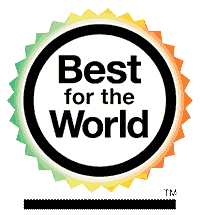Improve Content Consistency with Editorial Guidelines

In this post, we highlight the important role editorial guidelines play in executing—and maintaining—a successful content strategy, especially for organizations that want to scale their content marketing efforts over time.
When it comes to their content, most organizations understand the importance of consistency. Maintaining that consistency, however, can get complicated by all sorts of internal and external factors. Whether your team is small or large, experienced or not, creating and employing good editorial guidelines will ensure your content’s quality and consistency, which can, in turn, lead to higher levels of engagement and interaction (not to mention saved time).
Does Your Organization Need Editorial Guidelines?
Editorial guidelines are used to ensure that all content your organization produces is consistent in voice, tone, grammatical usage, format, and so on. In content marketing, these guidelines function as a manual for your content team, instructing them how to best achieve clearly stated goals. Good editorial guidelines are an essential part of an effective content governance plan.
Establishing these guidelines can help your team focus on telling a compelling story rather than wondering about whether or not they should use an Oxford comma (we’re fans). They also go hand-in-hand with defining a good content strategy for your organization. Editorial guidelines answer common questions, like:
- How long should your posts be?
- How casual or formal should they be?
- What are your standards for photos or illustrations?
- Should you punctuate bulleted lists?
- How do you treat headings and subheadings?
Answering these questions eats up valuable time and resources that your writing team could spend crafting content. Even though editorial guidelines require an initial time investment, they quickly justify themselves by smoothing out hiccups in your content creation process. Here are some suggestions for defining successful editorial guidelines.
Start With an Editorial Style Guide
Editorial style guides define how your organization treats elements of content, including punctuation, hyphenation, capitalization, numbers, units of measurement, and so on. They may also address document-specific issues like pagination or layout (for, say, articles and books), as well as how to treat references, include copyrights, or create a preface, foreword, index, or appendix. Whether you’re a copyeditor, a developmental editor, or a freelance writer hired to craft a blog post, a good style guide can be something you reference on a near-daily basis.
Here are three popular options: AP Stylebook, Chicago Manual of Style, MLA Formatting and Style Guide. But which one is best? Let’s explore each briefly.
AP Stylebook
The AP Stylebook, also known as The Associated Press Stylebook, is a grammar and usage guide that was initially created by American journalists to standardize mass press communication. Because of its wide usage, the AP stylebook has been adopted by most online publications whether they are related to news media or not.
Chicago Manual of Style
The Chicago Manual of Style was created in 1906 for the purpose of standardizing print media. It may be the better choice if you produce primarily traditional media.
MLA Formatting and Style Guide
The Modern Language Association’s Style Guide is a format developed for researchers, students, and scholars operating within academia to create a uniform way of formatting papers and assignments. These days, it is used widely in academic settings. However, its usage outside of academia and publishing is limited.
Of the styles mentioned, MLA is the most specialized. For most internet-based content like blogs or online publications meant for a broad audience, AP is standard. For some print media, Chicago can be a solid alternative to AP.

Define Voice and Tone
Your content’s voice and tone will signify to readers the type of organization you are. Define standards according to how you want target customers to perceive your brand. You wouldn’t, for example, write a scholarly article for a blog targeting middle school students. Know your audience and understand what resonates with them.
At Mightybytes, we’re big fans of the Brand Deck, a set of cards meant to help your organization clearly convey who you are. We use the Brand Deck in all sorts of workshops when clients struggle to clearly communicate what their organization is (or is not).
Voice
What voice will you use to communicate with your audience? Is it friendly? Helpful? Academic? Authoritative? Formal or casual? For some organizations, developing a unique voice can help them stand out in a crowded market. If your industry is primarily formal, for example, will adopting a more casual voice differentiate you from others?
Answer these questions to hone in on your company’s voice, then write down a handful of adjectives that clearly describe it. Include them in your guidelines along with samples that clearly show how you convey your brand’s voice.
Tone
In common usage, tone and voice are often mentioned together, however, organizational tone and voice are not the same thing. Whereas voice defines who your organization is trying to be, the tone refers to the way a message is communicated. For example, Denny’s Twitter account has a wildly different tone than their website. This difference is a calculated decision based on their interests as a company. Denny’s website is more informational, and their Twitter is intentionally more casual, meant to tap into meme culture and garner interest through that.
This approach may not be for everyone. To assess which tone you should use, refer back to your goals as an organization. Are you engaging in thought leadership? Perhaps an authoritative tone is appropriate. Are you intentionally irreverent? Then keep it casual.
It can be difficult to communicate voice and tone in terms that are universally understood. Be prepared to work with your content team to build consensus. Once established, include examples in your guidelines so that everyone clearly understands the standards.
Standardize Grammar
When creating a unified organizational voice, it is as important to standardize the grammatical mechanics as it is to characterize your brand. Punctuation is vital to a reader. It helps them parse text in an intentional way and often reinforces the general tone of the copy itself.
For example, does your company use exclamation marks? Though it may seem like a small thing, errant exclamation marks can be distracting to readers! Another question might be whether or not your writers should use rhetorical questions.
Though it may initially seem unimportant, these are the types of questions that appear in the editorial process and take time and energy to rework. If you know that you never want an exclamation mark appearing on your organization’s blog, making that clear to your team saves time in the long run.

Create Visual Standards
If you visit any major publication and randomly pick four or five articles, chances are they look similar. This is because most publications employ visual standards for their content.
These standards include things like:
- Fonts for headlines and body copy
- Standard heading sizes for H2, H3, H4, etc.
- Section breaks, such as horizontal lines, and so on
- Size, placement, and target file size for photos
- Accessibility standards to ensure content includes people with disabilities
While visual standards and editorial guidelines are technically two different things, they work hand-in-hand to provide a consistent experience for users. When a reader comes to your organization’s website, it is important to visually communicate expectations. Maintaining and growing a readership relies on setting a standard of excellence and achieving that standard every time new content is published.
Define the Editorial Process
Will writers also be responsible for editing content or do you have separate resources for that? What defines a ‘first draft’? Who gets final say on potentially sensitive topics? Who will input content to your content management system? To outline how your team should produce desired content outcomes, define a clear editorial process in as much detail as possible.
Final Thoughts
Editorial guidelines are an incredibly important piece of the content governance puzzle. By clearly defining expectations and processes up front, you minimize time editing and clarifying once production begins. This saves time and money and improves efficiency. You can’t preempt every question your creative team may have, but defining these guidelines will serve as a helpful resource to help content teams answer questions quickly.



